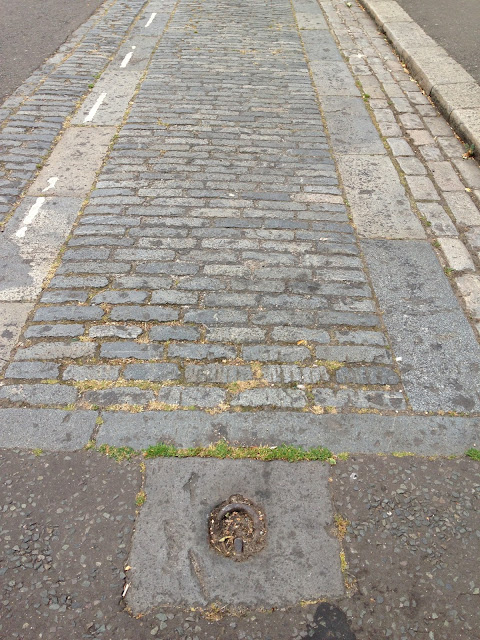"The house which may one day bear a plaque..."
...a distinguished monument in the history of ballet...
Alicia Markova was probably the most important ballerina in the history of British dance. Without her there would be no English National Ballet. In future posts I'll be telling her extraordinary story. But let's start at the beginning...
In 1953 dancer Anton Dolin, her friend and dance partner published a biography of Markova. In the preface he writes:"The (birth) certificate revealed that on the first day of December 1910 a daughter was born to Arthur Tristman Marks, a mining engineer, and his wife, Eileen Mary Ruth Marks, nee Barry, at 23 Wilberforce Road in the registration district of Hackney and the sub-district of Stoke Newington, in the County of London. She was named Lilian Alicia Marks. Though I have been an intimate friend of the Marks family for the best part of thirty years, I had never seen the place where Alicia was born, so, on leaving Somerset House, I made my way to North London, just to get a glimpse of the house which may one day bear a plaque announcing that one of the world's greatest dancers made her first appearance under its roof."
Sadly the house bears no plaque, and now (July 2017) is threatened with demolition. Given Markova's extraordinary significance in the development of British ballet this would be an act of cultural vandalism.
Here is number 23, the house in the middle with the grey door.
Dolin visited it in 1953 and wrote:
"Soon the green trees of Finsbury Park and the lofty spire of the Finsbury Park Methodist Church, which stands on the corner of Wilberforce Road, came into view. Number 23, which the Marks family vacated soon after Alicia's birth, bore no evidence of being a distinguished monument in the history of ballet. The front of this ordinary three-story house consists, on the ground floor, of a bay window and front door, flanked by newly-painted cream pillars and approached by a path of red and black tiles. There are two flat windows on the first floor and two more on the second. On either side of the entrance, in the little front garden, are miniature laurel trees."
The red and black tiles and laurel trees have gone, but the classic late Victorian frontage remains.
Here is what the developers propose to put in its place.
Anton Dolin continued, looking at that unassuming house:
"As I stood gazing at the house where Alicia was born, a young woman walked briskly up to the door, inserted her key in the lock, and hurried in. I wondered if she knew anything of the house in which she lived. She may have seen a poster a few yards away in the main road, announcing that Alicia Markova and Anton Dolin were to appear for a week at the Kilburn State Theatre, the largest auditorium in Europe. And if she had noticed it, I am sure the young woman would have been astonished to learn that the ballerina whose name was publicized in large letters of royal purple at the end of the road first saw the light o day in the house she was now entering"
Like that young woman, I'm astonished to discover that the little girl born in that house would go on to become, as the esteemed dance critic of The New York Times, John Martin. wrote, after seeing Markova dance her most famous role of Giselle “She is not only the greatest ballet dancer in the world today, but very possibly the greatest that ever lived.”
Rather than demolish her birthplace, a plaque would be more fitting. Like this.
If you'd like to support the campaign to prevent the demolition of Wilberforce Road please visit www.savewilberforceroad.org.uk or the Facebook page Save Wilberforce Road N4.




Comments
Post a Comment